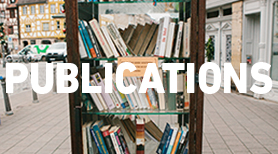
From children in the city to the city made by children: Three phases in youth & urban spatiality studies.
Mette Mechlenborg and Marie Blomgren Jepsen, 2018
Last modified: 25.06.2019
The paper takes its offspring in the rise of new participatory methods with concepts like “spatial citizenship” (Patterson 2007, Gryl&Jekel 2010, Jekel et al, 2015) and “critical spatial learning” (Goodchild&Janelle2010, Gorden et al, 2017) as a specific dimension of citizenship education (Bitch, 1995). With its origin in Critical Cartography and GISscience, the research on civic spatial engagement has primary focused on geotechnical uses and competences, while broader reflections of spatiality, place attachment, spatial production etc., has been largely ignored or understudied (Gordon et al, 2015).
In a review on spatiality and youth, the paper shows how concepts of space/place, empirical focus and the role of the child/youngster have changed historical and led the way to the contemporary interest in spatial citizenship. On that, the paper gives suggestions to how research on civic spatial learning and youth should be broadened in order to fulfill the potentials for engaging young people in our spatial societies.

